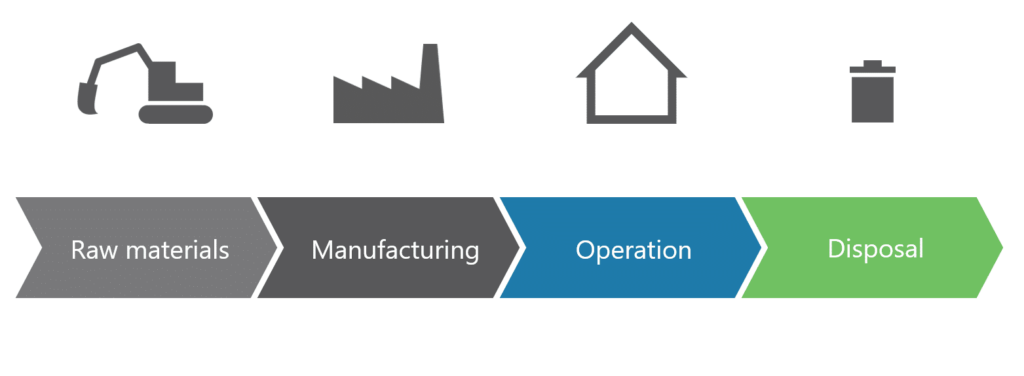By Andrew Moore, Principal Sustainability Scientist, Life Cycle Logic
What is LCA and why is it important to the Ecovillage?
Life cycle assessment (LCA) has emerged internationally as the preferred method to provide scientific proof of sustainability. It is a holistic approach that addresses a range of environmental impacts over the whole life cycle, from cradle to grave. By using a scientifically based data-driven approach – that considers the whole life cycle of the building – it ensures that real measurable improvements can be made throughout the Ecovillage.
LCA was first used in the Ecovillage to inform the development of the Sustainable Building Design Guidelines, in particular, the choice of building materials, to ensure that all homes are ultimately going to be carbon negative. We used a passive solar Cottage Lot home as a case study to assess many different types of walls, windows, cladding, insulation, flooring and foundation options to measure how each option would perform at the Witchcliffe location. We went to this level of detail so that individual homeowners didn’t have to.
What was the LCA process used at the Ecovillage?
The LCA study was based on a typical three-bedroom, two-bathroom passive solar house design for the Cottage Lots. The architectural drawings were first fed into thermal assessment software, to assess the thermal performance, and then used to develop detailed lists of materials that were entered into the LCA software. For each design option, the full life cycle was assessed including raw material extraction, processing, manufacturing, transport, operational energy and water use, maintenance, replacements, and disposal at the end of life of the individual materials. More than 99% of the materials and energy were included for the building to ensure that nothing was left out. The LCA study was conducted following international standards for life cycle assessment (ISO 14044 and EN 15978) and was critically reviewed by an independent LCA expert to ensure that the study was scientifically rigorous.
What did we learn?
In brief, the results show that the use of solar PV is the greatest way to produce a carbon-negative home. Insulating the ceilings and walls of the home as much as possible, regardless of the type of insulation, can lead to a more comfortable and lower greenhouse gas emissions (although there were a few exceptions to this). The study supports the use of natural materials, timber, local clay, strawbales, hemp, etc, along with high internal thermal mass and double glazed windows to reduce the carbon footprint further. This is only a high-level summary of the results; the study went into considerable detail. The full report will be published on the Ecovillage website in due course.
Future work
This scientifically based life cycle assessment approach will be used throughout the Ecovillage to guide decision-making and ensure that it really will be a sustainable place to live.

